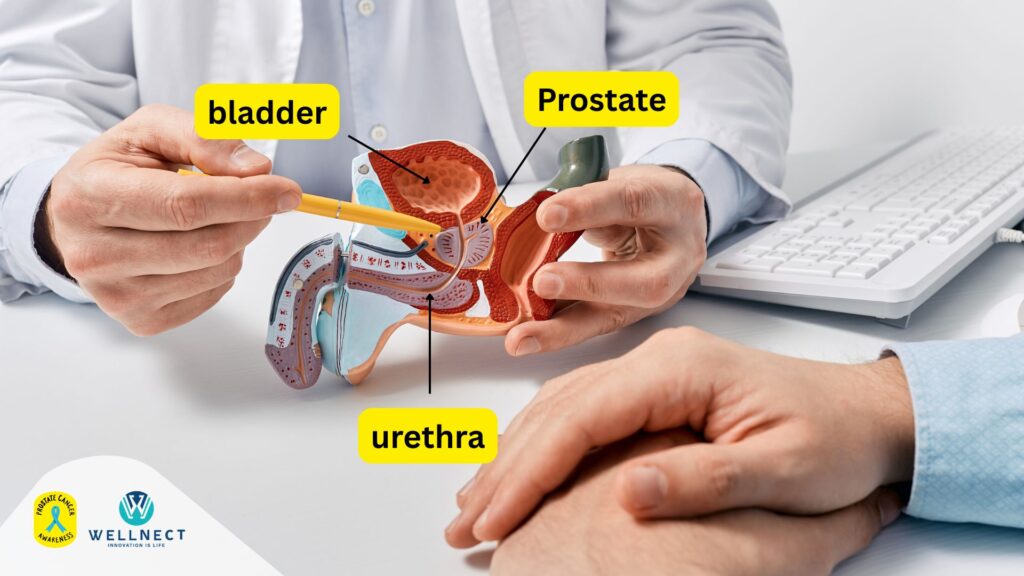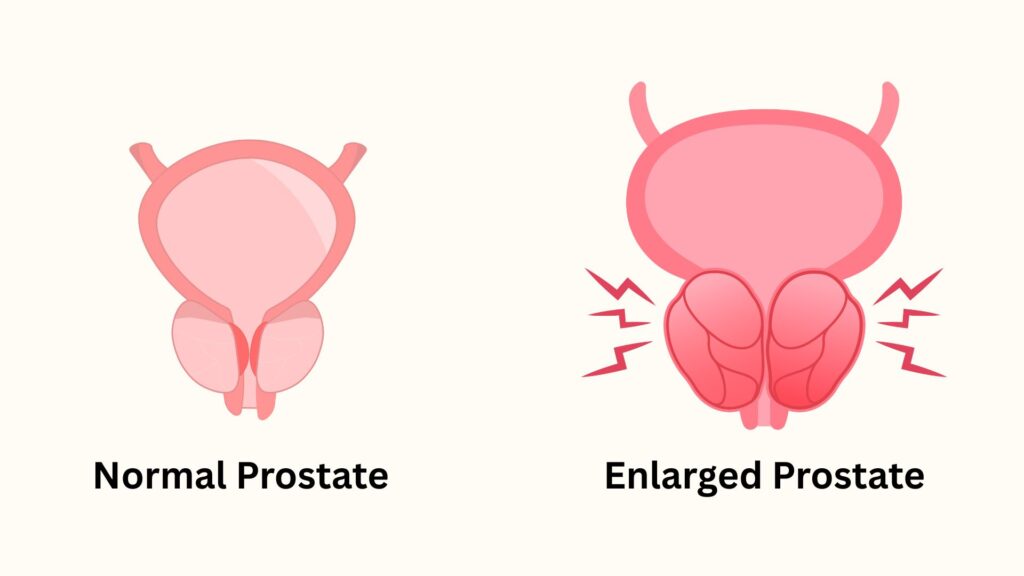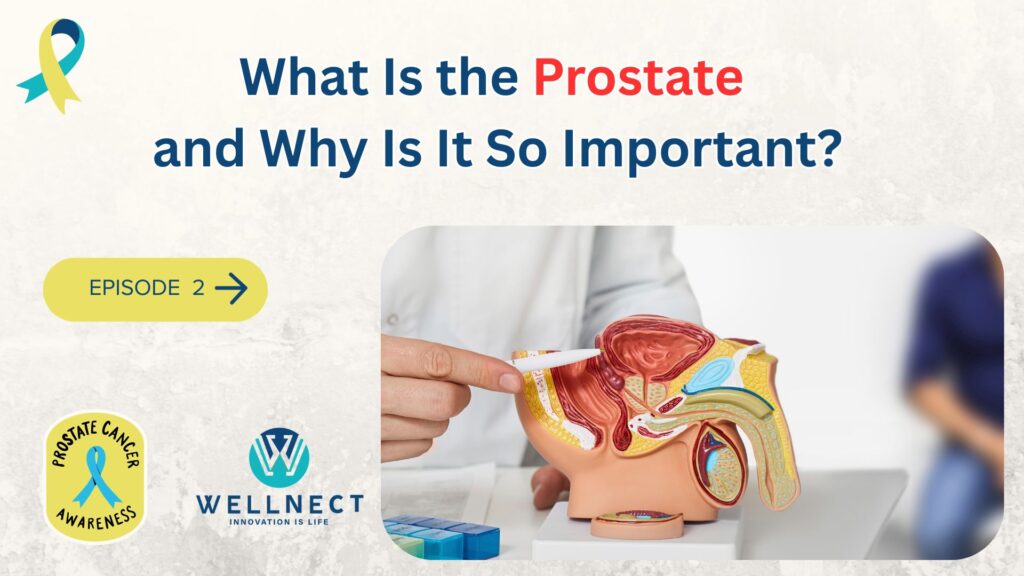Prostate Cancer Awareness Series – By Wellnect India

🧠 Introduction: The Word “Prostate” – Known But Not Understood
You’ve probably heard the term “prostate” in health discussions — especially around middle-aged or elderly men.
But ask someone: “What exactly is the prostate, and what does it do?”
Most won’t have a clear answer.
In this second episode of the Prostate Cancer Awareness Series, let’s break down the basics:
👉 What is the prostate?
👉 Where is it located in the body?
👉 What is its function?
👉 And why does it matter so much — especially for men above 40?
Let’s get started.
🧬 What Exactly Is the Prostate?

The prostate is a small, walnut-sized gland that is part of the male reproductive system.
It’s located just below the bladder and surrounds the urethra — the tube that carries urine from the bladder out of the body.
It may be small, but it has a big role to play in a man’s health and fertility.
🔍 Function of the Prostate – Why Is It There?
The primary function of the prostate is to:
✅ Produce seminal fluid:
This fluid:
- Nourishes sperm
- Protects it
- Helps in smooth ejaculation
In fact, 30–40% of the fluid that comes out during ejaculation is made by the prostate.
✅ Acts as a gatekeeper:
The prostate sits like a ring around the urethra.
It controls the flow of urine and semen, ensuring both functions happen smoothly but separately.
📈 When Things Go Wrong: What Happens With the Prostate?
As men age, the prostate can undergo several changes. These changes are often silent, but they can significantly affect health if ignored.
1. Benign Prostatic Hyperplasia (BPH)

This is non-cancerous enlargement of the prostate.
Common symptoms include:
- Frequent urination (especially at night)
- Weak urine flow
- Difficulty starting or stopping urination
- A feeling of incomplete bladder emptying
BPH is not cancer, but its symptoms can mimic those of prostate cancer.
2. Prostatitis
This is inflammation of the prostate, which can occur due to bacterial infection or unknown reasons.
It can cause:
- Pain while urinating
- Pelvic discomfort
- Urinary urgency
3. Prostate Cancer
This is the most serious condition affecting the prostate.
It usually begins silently and is often detected only through screening or when it spreads.
🔔 Why Most Men Ignore Their Prostate Health
In India and many parts of the world, men often ignore their own health — especially when it involves the reproductive system.
There’s hesitation, discomfort, and sometimes even shame in talking about:
- Urinary symptoms
- Sexual health issues
- Rectal exams
This silence can be deadly.
Most cases of prostate cancer are diagnosed late because:
- Men wait too long to get symptoms checked
- Regular screening isn’t part of routine health checkups
- There’s very little public awareness
📅 When Should Men Start Caring About the Prostate?
🎯 Men should start monitoring their prostate health after the age of 40.
Especially if:
- You have a family history of prostate cancer
- You experience urinary symptoms
- You want to maintain your long-term sexual and urinary health
💬 Wellnect’s Message: Awareness Leads to Action

Prostate cancer is often preventable or treatable — if caught early.
But early detection is only possible when men know what the prostate is, what signs to look out for, and why timely checkups matter.
This episode is not just about the anatomy —
it’s about breaking the silence around male health.
Let’s normalize talking about the prostate.
🔜 Coming Up Next
In Episode 3, we’ll explain:
👉 What exactly is cancer?
👉 How does prostate cancer start?
👉 What are the early signs to watch out for?
Stay with us as we decode prostate cancer, one fact at a time.
